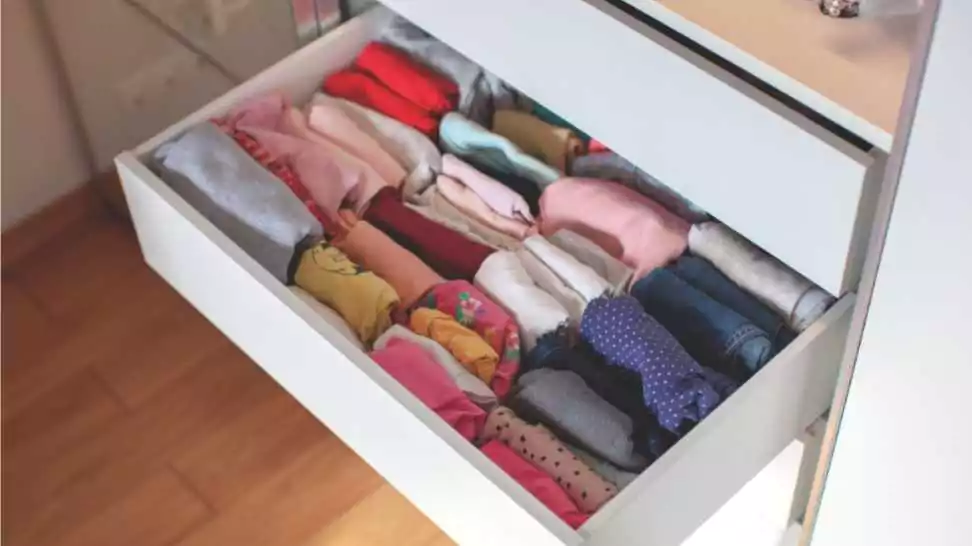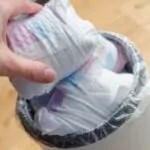How To Wash Cloth Diapers For The First Time?

In recent years, there’s been a significant resurgence in the popularity of cloth diapers, and for good reason. These eco-friendly alternatives to disposable diapers are not only kinder to our planet but also gentle on your baby’s delicate skin. But beyond their environmental and health benefits, cloth diapers can be a cost-effective choice for families, saving you money in the long run.
However, with the decision to use cloth diapers comes the crucial task of washing them correctly. Proper cleaning is not just about maintaining hygiene; it’s also about preserving the quality and extending the life of these reusable gems. For first-time parents or those new to the world of cloth diapers, this might seem daunting. But fear not! This guide is designed to demystify the process, offering practical tips and tricks to ensure your cloth diapers remain clean, hygienic, and ready for repeated use. Whether you’re a seasoned pro or a curious newcomer, this ultimate guide on how to wash cloth diapers for the first time will walk you through everything you need to know about effectively washing cloth diapers.
1 Preparing to Wash Cloth Diapers for the First Time
Navigating the initial steps in washing cloth diapers can be overwhelming for new parents. This section aims to simplify the process, starting with understanding the different types of cloth diapers, followed by essential preparation steps to ensure an effective and hygienic wash.
Understanding Different Types of Cloth Diapers

Cloth diapers come in various types and materials, each catering to different needs and preferences. Here’s a quick overview:
- Prefolds and Flats: These are traditional styles, made from absorbent fabric that can be folded in various ways. They’re economical and versatile but require a separate waterproof cover.
- Fitted Cloth Diapers: Made entirely of absorbent material and fitted with elastic around the legs and waist, these need a waterproof cover but offer excellent absorbency.
- Pocket Diapers: Featuring a waterproof outer layer and a pocket for inserting absorbent liners, these are customizable in terms of absorbency and are easy to use.
- All-in-Ones (AIOs): As the most convenient option, AIOs combine both the absorbent layer and waterproof cover in one piece, mimicking the ease of use of disposable diapers.
- Hybrid Diapers: Offering a mix of reusable and disposable elements, hybrids have a reusable outer cover and a choice between cloth or disposable inserts.
Each type has its own washing needs, influenced by the materials used – from natural fibres like cotton and bamboo to synthetic ones like microfiber.
Initial Preparation Steps
Before you dive into regular washing routines, it’s important to prep your cloth diapers:
Pre-Washing New Cloth Diapers: New cloth diapers often come with natural oils that can hinder absorbency. A few initial washes with a small amount of detergent can remove these oils and “prep” the diapers for use.
Gathering Necessary Supplies:
- Detergent: Choose a cloth diaper-friendly detergent free of fragrances, dyes, and fabric softeners to avoid residue build-up.
- Diaper Sprayer: A handy tool that attaches to your toilet, allowing you to rinse off solid waste easily.
- Wet Bag or Pail: For storing dirty diapers until wash day.
- Optional Accessories: Liners for easier clean up, and cloth diaper-safe rash creams.
2 The Washing Process Explained
Mastering the washing process is crucial for maintaining the hygiene and integrity of your cloth diapers. This section guides you through each step, from pre-rinsing to selecting the right detergent and washing machine settings.
Pre-Rinsing Techniques
Effective pre-rinsing is key to preventing stains and odours:
- Removing Solid Waste: For babies on solid food, use a diaper sprayer or liner to remove waste before rinsing. For exclusively breastfed babies, their waste is water-soluble and doesn’t require pre-removal.
- Initial Rinsing Methods: A cold water rinse is ideal before the main wash. This step helps to remove urine and faecal matter, reducing the risk of stains and odours setting in. You can use your washing machine’s rinse cycle or do a quick hand rinse.
Choosing the Right Detergent
The right detergent can make a significant difference:
- Recommended Detergents: Look for detergents that are free from additives like fabric softeners, brighteners, or fragrances. Brands specifically formulated for cloth diapers are usually the safest bet.
- What to Avoid in a Detergent: Steer clear of detergents with fabric softeners as they can reduce absorbency. Also, avoid using too much detergent, as it can cause residue build-up leading to diaper rashes and reduced efficiency.
Washing Machine Settings
The correct washing machine settings are vital for thorough cleaning:
- Ideal Temperature Settings: A warm wash is generally recommended. Hot water can be used occasionally to deep clean, but frequent use may shorten the lifespan of your diapers.
- Cycles for Cloth Diapers: Use a heavy-duty wash cycle to ensure the diapers are thoroughly cleaned. The extra agitation helps remove all traces of waste and detergent.
Can You Wash Cloth Diapers With Other Clothes?

A common question among cloth diapering parents is whether it’s okay to wash cloth diapers with other clothes. This section explores the feasibility of combining diaper laundry with regular clothes, outlining the pros and cons and providing best practices for those who choose to do so.
Pros and Cons
Evaluating the Safety and Effectiveness:
Pros:
- Efficiency: Washing cloth diapers with other clothes can be more energy and water-efficient, as it allows for fuller loads.
- Convenience: It simplifies laundry routines, especially for busy parents.
Cons:
- Hygiene Concerns: There’s a potential risk of cross-contamination, especially if diapers are heavily soiled.
- Wear and Tear: Regular clothes might suffer from the rigorous washing cycles needed for diapers.
- Detergent Sensitivity: Some fabrics in regular clothes might not react well to diaper-specific detergents.
Best Practices If Combining Loads
If you decide to wash cloth diapers with other garments, here are some tips to do it safely and effectively:
- Pre-Rinse Diapers Separately: Always pre-rinse diapers on their own to remove the bulk of the waste and urine.
- Consider the Type of Clothes: Avoid washing diapers with delicate items. It’s best to combine them with sturdier clothing like towels or bed linens.
- Use Appropriate Detergent: Choose a detergent that is safe for both diapers and regular clothes, ideally one that’s free of fragrances, dyes, and fabric softeners.
- Hygiene First: Ensure that the washing machine is set to a cycle with a sufficient water level and agitation to clean both diapers and clothes thoroughly.
- Post-Wash Rinse: Consider an extra rinse cycle to ensure all detergent residue is removed, which is especially important for the diapers.
3 Drying and Storing Cloth Diapers
After washing cloth diapers, the next crucial step is drying and storing them. Proper drying and storage not only maintain the quality of the diapers but also ensure they are ready for use when needed.
Line Drying vs. Machine Drying
- Line Drying: This is the most eco-friendly option. Sunlight naturally bleaches and disinfects cloth diapers, removing stains and odours. However, it may not always be feasible due to weather conditions or space constraints.
- Machine Drying: Faster and more convenient, especially in cold or rainy weather. Use a low or medium heat setting to prevent damage to the elastic and waterproof layers.
Tips to Maintain Shape and Absorbency:
- Avoid high heat as it can damage the fabric and reduce absorbency.
- If line drying, hang diapers by the waist to prevent stretching. For diapers with elastic legs, avoid hanging them from the legs.
- Give each diaper a quick stretch or “fluff” after drying to maintain its shape and softness.
Storing Clean Diapers

Proper storage is key to keeping your cloth diapers in optimal condition:
- Choose a Dry, Cool Place: Store your diapers in an area that’s free from humidity to prevent mould and mildew growth.
- Organization: Use a shelving system, drawer, or basket to organize diapers for easy access. This can also help in rotating your stash so that wear is distributed evenly.
- Avoid Compression: Don’t stuff or over-pack diapers in the storage area, as this can affect their shape and elasticity.
4 Troubleshooting Common Issues
Even with a good washing routine, cloth diapers can sometimes present challenges such as stains, odours, or wear and tear. This section provides solutions for these common issues, ensuring your cloth diapers remain in top condition.
Dealing with Stains
Stains are almost inevitable with cloth diapers, but they can be effectively managed with the right approach:
- Sun Bleaching: The sun is a natural stain remover. After washing, lay the diapers out in direct sunlight. The UV rays help break down and lift stains.
- Lemon Juice: For tougher stains, apply lemon juice to the stained area before sunning. Remember to rinse thoroughly afterwards, as lemon can be harsh on the fabric if left on.
- Enzyme Cleaners: Use a cloth diaper-safe enzyme cleaner to treat stains before washing. These enzymes break down organic matter, making it easier to wash out.
Odour Removal Strategies
Persistent odours can be a nuisance but are usually manageable with the right techniques:
- Proper Rinsing: Ensure diapers are rinsed thoroughly before washing to remove as much urine and faecal matter as possible.
- Baking Soda and Vinegar: Add a half cup of baking soda to the wash cycle and a cup of white vinegar to the rinse cycle. This combination can neutralise odours without damaging the diapers.
- Regular Stripping: Over time, residue from detergents and creams can build up, leading to odours. Stripping the diapers using a recommended cloth diaper-stripping agent can help.
Diaper Longevity Tips
To ensure your cloth diapers last through multiple children, consider the following:
- Rotating Your Stash: Regularly rotate through your entire stash of diapers to prevent the overuse of a few favourites.
- Gentle Washing: Use a gentle, cloth diaper-friendly detergent and avoid high heat in washing and drying.
- Proper Storage: Store diapers in a cool, dry place away from direct sunlight when not in use.
- Repairing Minor Damage: Learn basic repairs like replacing elastics or snaps to extend the life of your diapers.
5 Wrapping Up
Embarking on the cloth diapering journey is not just a choice for your baby’s comfort and health, but also a step towards a more sustainable lifestyle. It’s a path filled with its own set of challenges, but with the right knowledge and practices, it can be incredibly rewarding. Remember, each small effort you make contributes to a larger impact on our environment and sets a positive example for the next generation.
So, to all new parents considering or starting with cloth diapers, take heart. You’re joining a community of mindful caregivers who choose to make a difference every day. With patience, persistence, and this guide in hand, you’re well-equipped to navigate the ins and outs of cloth diapering successfully.
Community Q&A
About This Article
This article has been viewed 105 times.



